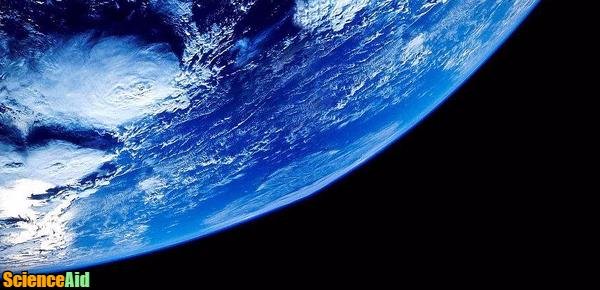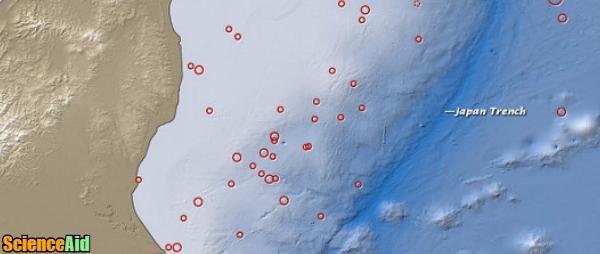What Is the Theory of Plate Tectonics
Edited by TPappin, Sharingknowledge, Jen Moreau
What is Plate Tectonics?
Plate tectonics is a theory that was first proposed in the early 1900s by scientist Alfred Wegener, but was not said to be true until the 1960s.
- 1It states that Earth's outer shell is made up of many different plates, all which glide over top the Earth's mantle. The plates are found in the lithosphere. Also known as continental drift, the theory of plate tectonics is the reasoning behind why and how continents are constantly moving.What It States.Advertisement
- 2The movement of continents is caused by what's happening beneath Earth's crust. Seismic waves, which are waves of energy that occur when tectonic plates push against each other and pull apart, cause rock within the Earth to suddenly break, causing disruption and in some cases, even explosion or volcanoes. Seismologist Nicolas Van der Elst describes the process as "…a pot boiling on a stove."Why It Occurs.
The History of Plate Tectonics
When Alfred Wegener first proposed the theory of continental drift, he described the tectonic plates, or the continents, as puzzle pieces fitting together. He continued to explain his theory after realizing the Earth's surface changing significantly over time while noticing that continents which, at one point, were not separated, were. This was also noted by paleontologists when fossils of the same species were found on different continents, now separated. Their combined observations determined that the Earth's lithosphere had, in fact, been moving over time.
- 1Not everyone agreed with Wegener's theory, as there wasn't really a way to prove why the continents were moving, other than his observation. Many other scientists believed it was due to the Earth's temperatures, causing continents to contract.Controversy.
- 2Wegener originally proposed that Earth's continents pushed against the ocean floors, although he was unable to identify the direct cause of continental drift. For that reason, geologists deemed his theory false; however, it did lay the groundwork for the development of plate tectonics and over time, additional evidence was gathered.Disproved.
- 3
- 4In the 1960s is when the plate tectonic theory started to gain acceptance across the world.1960s.
The Plates
The tectonic plates are found in the Earth's lithosphere, which is the outermost shell, or in other words, the crust and the mantle combined. The lithosphere is broken up into seven or eight major tectonic plates, as well as several minor ones.
- 1Each of the major tectonic plates has their own unique name: African plate, Antarctic plate, Eurasian plate, Indo-Australian plate, North American plate, Pacific plate and South American plate. These plates account for 94% of the Earth's surface.Their Names.
- 2The tectonic plates are constantly in motion, which is what ultimately starts earthquakes, volcanoes, mountain formations and oceanic trenches. Each plate is about 80 km deep and moves only a few inches each year.What They Do.
Plate Boundaries
- 1Plate boundaries are where each of the tectonic plates meet. There are three main types of plate boundaries, also known as subduction zones or convergent margins: convergent boundaries, divergent boundaries and transform boundaries.What They Are.
- 2When two plates meet underwater and one or both are composed of oceanic crust. The plate which is denser is pushed underneath the less dense tectonic plate, which eventually melts and is destroyed completely.Convergent Boundaries.
- 3Divergent boundaries are when two tectonic plates are moving away from one another. This process can occur underwater or on land.Divergent Boundaries.
- 4Transform boundaries are when two tectonic plates slide horizontally past one another. Like divergent boundaries, transform boundaries can occur underwater or on land. When the two plates slide past each other, friction is caused, building up stress in both plates, which then causes an earthquake. This is also known as a fault, or a fault plane.Transform Boundaries.
Plate Collisions
- 1Plate collisions occur when the subduction zone between two plates is destroyed. It is a phenomenon of the plate tectonics. When this happens, mountains can be formed, volcanoes can erupt and two continents ultimately come together, affecting what the map of the Earth looks like.What Is It?
- 2The Himalayan Mountain formed as a result of the Indian Plate and Eurasian Plate colliding. This process began 50 million years ago and continues to this day. The continental crust of both plates buckled, causing rock to pile up.The Himalayas.
- 3
- 4All subduction zones must eventually disappear. Once they do, the tectonic plates will collide, creating a mountain range. This has already occurred a number of times across the world.Subduction Zones.
- 5The Wilson Cycle refers to the recurrent opening and closing of ocean basins, causing the Earth to move. It starts when magma erupts toward the Earth's crust, forming an ocean basis, acting as a final resting spot for the settled magma.The Wilson Cycle.
Referencing this Article
If you need to reference this article in your work, you can copy-paste the following depending on your required format:
APA (American Psychological Association)
What Is the Theory of Plate Tectonics. (2017). In ScienceAid. Retrieved Apr 25, 2024, from https://scienceaid.net/What_Is_the_Theory_of_Plate_Tectonics
MLA (Modern Language Association) "What Is the Theory of Plate Tectonics." ScienceAid, scienceaid.net/What_Is_the_Theory_of_Plate_Tectonics Accessed 25 Apr 2024.
Chicago / Turabian ScienceAid.net. "What Is the Theory of Plate Tectonics." Accessed Apr 25, 2024. https://scienceaid.net/What_Is_the_Theory_of_Plate_Tectonics.
If you have problems with any of the steps in this article, please ask a question for more help, or post in the comments section below.
Comments
Article Info
Categories : Geology
Recent edits by: Sharingknowledge, TPappin
















